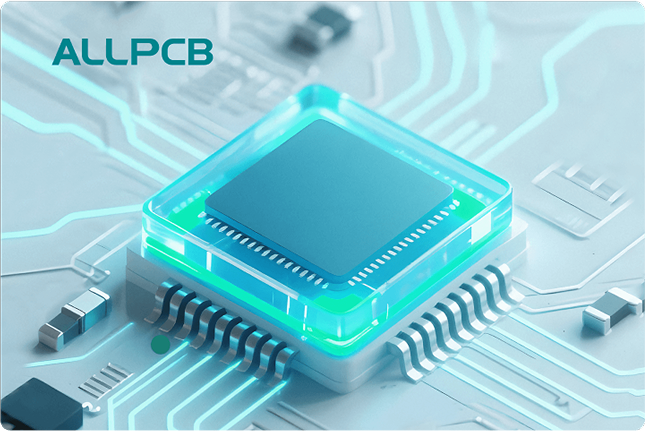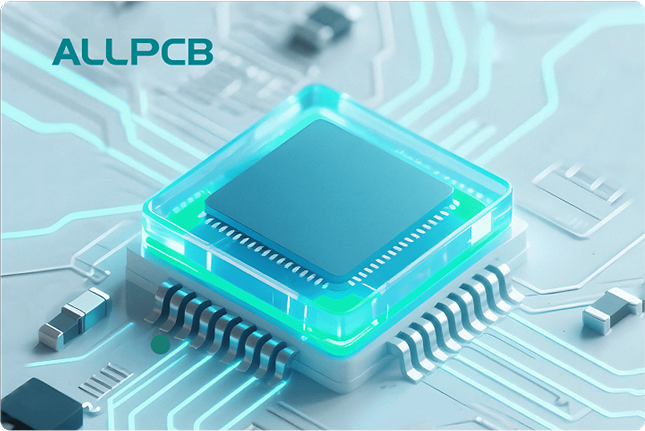In the world of PCB design, maximizing density without sacrificing performance is a top priority. One key component that can make or break your design is the IC socket. But how do you choose the right one for a high-density PCB layout? The answer lies in understanding factors like IC socket footprint, IC socket height, and the specific needs of your design, whether it’s for surface mount IC sockets, through-hole IC sockets, or fine pitch IC sockets. In this comprehensive guide, we’ll walk you through the essentials of selecting the perfect IC socket to optimize space, ensure reliability, and boost performance in your high-density PCB projects.
Why IC Sockets Matter in High-Density PCB Design
IC sockets serve as the critical bridge between integrated circuits (ICs) and the printed circuit board (PCB). They allow for easy installation, replacement, and testing of ICs without soldering directly to the board. When it comes to high-density PCB sockets, the right choice can significantly impact your board’s space efficiency and functionality. A poorly chosen socket can lead to wasted space, signal integrity issues, or even mechanical failures.
In high-density designs, every millimeter counts. With the trend toward IC socket miniaturization, modern sockets are designed to fit into tighter spaces while maintaining robust electrical connections. Whether you’re working on consumer electronics, automotive systems, or industrial applications, selecting the right socket is an art that balances space constraints with performance needs.
Understanding IC Socket Types for High-Density Designs
Before diving into selection criteria, let’s explore the main types of IC sockets commonly used in PCB designs. Each type has unique characteristics that influence its suitability for high-density layouts.
1. Surface Mount IC Sockets
Surface mount IC sockets are directly mounted onto the PCB surface, eliminating the need for holes through the board. This type is ideal for high-density designs because it allows for tighter component placement and supports automated assembly processes. These sockets often have a smaller IC socket footprint, making them a go-to choice for compact layouts. They are commonly used in modern electronics where space is at a premium, such as smartphones and wearable devices.
Key Advantage: Surface mount sockets typically have a low IC socket height, often ranging from 1.5mm to 3mm, which helps in creating thinner devices.
2. Through-Hole IC Sockets
In contrast, through-hole IC sockets are inserted into drilled holes on the PCB and soldered on the opposite side. While they are more robust and easier to replace manually, they require more space due to the holes and larger footprints. These sockets are better suited for applications where durability is critical, such as industrial equipment, rather than high-density consumer electronics.
Key Consideration: Through-hole sockets often have a larger IC socket footprint and height (typically 5mm to 10mm), which can limit their use in ultra-compact designs.
3. Fine Pitch IC Sockets
For designs requiring even greater density, fine pitch IC sockets are the solution. These sockets feature closely spaced pins or contacts, often with pitches as small as 0.4mm or 0.5mm, compared to standard pitches of 1.27mm or 2.54mm. Fine pitch sockets are essential for modern ICs with high pin counts in small packages, enabling designers to pack more functionality into a smaller area.
Key Advantage: Fine pitch sockets support IC socket miniaturization, allowing for more components on the same board without increasing size.
Key Factors to Consider When Selecting IC Sockets for High-Density PCBs
Choosing the right IC socket for a high-density PCB involves evaluating several critical factors. Below, we break down the most important considerations to guide your decision-making process.
1. IC Socket Footprint and Board Space
The IC socket footprint is one of the first things to assess in a high-density design. A smaller footprint means you can place more components closer together, maximizing the use of available board space. For example, a surface mount socket for a 32-pin IC might have a footprint of just 5mm x 5mm, while a through-hole equivalent could take up 10mm x 10mm or more due to the additional clearance needed for holes.
Tip: Always check the manufacturer’s datasheet for exact footprint dimensions and recommended PCB pad layouts to avoid placement errors in your design.
2. IC Socket Height and Vertical Clearance
The IC socket height is another crucial factor, especially in designs where vertical space is limited, such as in ultra-thin laptops or IoT devices. Low-profile sockets, often under 2mm in height, are ideal for such applications. However, keep in mind that lower height can sometimes mean reduced mechanical stability, so balance this with the environmental demands of your project.
Example: In a wearable device with a maximum enclosure height of 5mm, opting for a socket with a height of 1.8mm leaves room for other components and ensures the design fits within constraints.
3. Pin Pitch and Compatibility with IC Packages
For high-density designs, matching the socket’s pin pitch to the IC package is vital. Using fine pitch IC sockets with pitches below 0.5mm is often necessary for modern ICs like QFN or BGA packages. A mismatch in pitch can lead to connection failures or signal integrity issues, especially at high frequencies where even small misalignments can cause impedance mismatches (typically in the range of 50 ohms for standard PCB traces).
Tip: Verify the pitch compatibility between the IC and socket to ensure reliable electrical performance.
4. Mounting Type: Surface Mount vs. Through-Hole
As discussed earlier, the choice between surface mount IC sockets and through-hole IC sockets depends on your density requirements and manufacturing process. Surface mount sockets are generally preferred for automated assembly and high-density layouts, while through-hole sockets might be chosen for prototypes or designs where frequent IC replacement is expected.
Fact: Surface mount technology can reduce assembly costs by up to 30% in high-volume production due to automation compatibility.
5. Electrical Performance and Signal Integrity
In high-density designs, maintaining signal integrity is critical, especially for high-speed applications like data communication or processing (with signal speeds often exceeding 1 GHz). IC sockets must minimize parasitic capacitance and inductance, which can degrade signal quality. Look for sockets with low contact resistance (typically under 20 milliohms) and high-frequency support to ensure performance.
Example: A fine pitch socket designed for high-speed applications might offer a bandwidth of up to 10 GHz, making it suitable for modern microcontrollers or memory chips.
The Role of IC Socket Miniaturization in Modern PCB Design
As electronic devices continue to shrink, IC socket miniaturization has become a driving force in PCB design. Miniaturized sockets not only save space but also support the integration of advanced ICs with higher pin counts in smaller packages. This trend aligns with the broader push for high-density interconnect (HDI) technology, which uses finer lines, smaller vias, and tighter spacing to pack more functionality into less space.
For instance, a miniaturized socket for a 64-pin IC might reduce the footprint by 40% compared to traditional designs, allowing designers to fit additional components or reduce the overall board size. This is particularly beneficial in applications like medical devices or IoT sensors, where compactness is non-negotiable.
However, miniaturization comes with challenges. Smaller sockets can be more delicate, requiring precise assembly techniques to avoid damage. Additionally, thermal management becomes trickier as components are packed closer together, potentially leading to hotspots if not addressed in the design phase.
Best Practices for Integrating IC Sockets into High-Density PCBs
To ensure success in your high-density PCB projects, follow these best practices when selecting and integrating IC sockets:
- Prioritize Design Software Compatibility: Use PCB design tools that allow you to import accurate socket footprints and 3D models to visualize spacing and height constraints before manufacturing.
- Test for Thermal and Mechanical Stress: High-density designs are prone to heat buildup and mechanical stress. Select sockets rated for your operating temperature range (e.g., -40°C to 85°C for industrial applications) and test under real-world conditions.
- Consider Future Upgrades: Choose sockets that support easy IC replacement if future upgrades or reprogramming are anticipated, especially in development phases.
- Optimize for Manufacturing: Align your socket choice with your assembly process. For high-volume runs, surface mount sockets streamline production, while through-hole might be better for low-volume or manual assembly.
Common Challenges and Solutions in High-Density IC Socket Selection
Even with careful planning, challenges can arise when working with high-density PCB sockets. Here are some common issues and how to address them:
- Challenge: Limited Space for Socket Placement
Solution: Opt for miniaturized or fine pitch sockets to reduce footprint. Consider stacking components vertically if horizontal space is constrained. - Challenge: Signal Degradation at High Frequencies
Solution: Select sockets with low parasitic effects and ensure proper grounding and shielding around high-speed signal paths. - Challenge: Mechanical Reliability in Compact Designs
Solution: Choose sockets with robust contact mechanisms, such as spring-loaded pins, to maintain connection integrity under vibration or shock.
Conclusion: Mastering the Art of IC Socket Selection
Maximizing PCB density is a complex but rewarding endeavor, and selecting the right IC socket plays a pivotal role in achieving success. By carefully considering factors like IC socket footprint, IC socket height, and the benefits of fine pitch IC sockets, you can create designs that are both compact and high-performing. Whether you opt for surface mount IC sockets for automated assembly or through-hole IC sockets for durability, the key is to align your choice with the specific demands of your project.
The trend toward IC socket miniaturization continues to open new possibilities for high-density designs, enabling smaller, smarter, and more powerful electronics. With the insights and best practices shared in this guide, you’re well-equipped to navigate the challenges and make informed decisions for your next PCB project. Focus on precision, test thoroughly, and let the right high-density PCB sockets elevate your design to the next level.
 ALLPCB
ALLPCB







